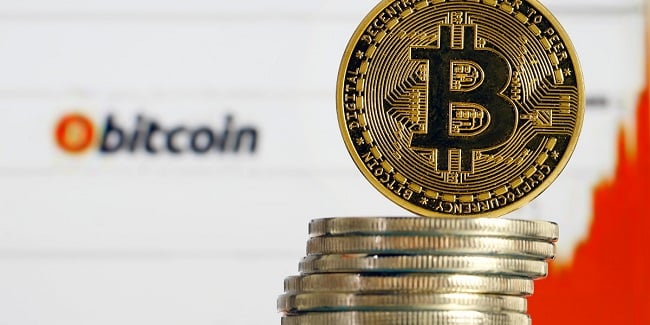
It’s a question a lot of people ask: Is bitcoin mining still profitable in the modern era of blockchain?
As the business world expands, cryptocurrency trading is emerging as one of the world’s most popular businesses. The cryptocurrency market is perceived as one of the most profitable trading industries and this source of trade is being adopted by more and more traders on a daily basis. Among the most popular cryptocurrencies in the world are Bitcoin, Ethereum and Litecoin.
Cryptocurrencies is a typical economics and modern technology combination. While these fast-paced digital currencies evolve exponentially, crypto-trading becomes a probability game where each trader pushes the ratios to their advantage.
While the business of cryptocurrency trading is thriving, bitcoin mining is another option to profit from bitcoins. Miners use their computational skills to solve mathematics blockchain algorithms and earn bitcoins as a reward.Although it seems simple, it is a process that consumes time and energy.
For want to be miners, appropriate hardware and access to the internet is needed for an investor to mine, the actual process being the compilation of recent transactions into blocks in order to solve complex puzzles. The person who solves the puzzle first is permitted to place the next block on the blockchain and reap the rewards, which include transaction fees associated with the transactions carried out in the block, together with a newly released coin, the amount of which is referred to as the block reward.
The difficulty in mining is adjustable and is adjusted every 2016 blocks, equivalent to around every 2-weeks, with the adjustment made to ensure that the block rate discovery remains constant, the difficulty is therefore adjusted to the computational power used for mining.
So, the question you should be wondering right now is whether bitcoin mining is more profitable than trading?
How Does Crypto Mining Work?

Before we get to the verdict, let us first understand how does crypto mining work?
First emerged in 2009, in the form of Bitcoin, the concept of cryptocurrency mining and blockchain development. Establishing an unregulated, decentralized and a secure digital currency was the primary focus of the anonymous group “Satoshi Nakamoto” in developing Bitcoin.
To compensate the challenge of corruption in the system, the blockchain was pioneered with the policy that miners would have to first solve a mathematical puzzle that would link the freshly created block with its predecessors in order to generate blocks, thereby establishing a chain.
Fortunately for us, there are many crypto mining rigs available in the market that can solve these complex mathematical and logical problems with an elaborate computer codes and extreme hardware capabilities. But the only question is, at what cost and is it even worth it?
What is the Cost of Crypto Mining?

Bitcoin prices are on highest trend right now since its creation in 2009. And with sky high market capital, Bitcoin hash rate has increased to incredible numbers. Hash rate is the computational power of a mining computer. Measured in the Hash-per-second, Hash rate is the key to mining. The more hash rate a computer generates, the more likely it can mine bitcoin.
It is highly likely that mining difficulty as well as network hash rate will hike through the estimated third block halving on May 14, 2020. The mining difficulty is 12.88T at the time of writing, while the next difficulty is estimated at 12.74 T, down by 1.04 per cent.
However, the good news is that in the near future, the price-mining difficulty ratio is expected to rise. This means that the price of Bitcoin would rise faster than the difficulty of mining, thus adding up to the miners ‘ overall profit.
In 2017, the collective hash rate was recorded to be at 4 Exahash (EH/s). This represents the interest of miners in the mining bitcoins.
But how much hash-rates do you need to earn Bitcoins?
With mining reward at 12.5 bitcoins, if you mine at 3800 GigaHash (GH/s), odds are more likely to earn bitcoins. To achieve this kind of hash rate, you need serious investment in mining hardware.
How Much Does a Crypto Mining Rig Cost?
Keeping in mind that halving the third block reward is around the corner, having mining hardware which is more power-efficient is more crucial than ever. According to the report, the performance of high-power efficiency mining hardware did not scale up to what it was during the second quarter, but they still “performed better and managed the downside risks than other mainstream models.” Old mining hardware models have lost their credibility in the market as some have increased their payback period by as much as 500 days.
Investing in crypto mining rig hardware can cost a fortune to start with but this is not the only thing to worry about. Mining computers take up a lot of energy to compute. Unless you don’t have access to cheap electricity, mining computers can bolster up your electricity bills to major extent.
With the increasing amount of power consumption and the mining cryptocurrencies cost, miners are almost out of the game for individuals. Cloud mining is now the most viable option for the individual miners.Token Insight analyzed multiple mining companies’ cloud mining contracts and concluded that RR Mine had the lowest unit cost of $0.097 per day in computing power.
The report also mentioned that there are multiple categories of mining hardware used by cloud mining companies. That hedges both investors and firms against the failure of any mining hardware category. In such cases, mining hardware continues to deliver consistent profit except for the ones that failed.
All of this, collectively, can take up a fortune and not leave much room for the profit. But once the prices for bitcoin increases, investments can turn into a pretty good profit. This profit can revenue by different trading techniques.
However, there are still somethings you need to know about Bitcoin mining rewards before you invest in a crypto mining rig and think about those profits.
What is the Reward of Bitcoin Mining?
It’s literally a million-dollar question, isn’t it? What are you getting after mining at such an extensive cost?
Over the years, hash rates have been increasing rapidly to generate more and more bitcoins for the people. In order to adjust the deficit, bitcoin has increased the overall complexity of mining for its blockchain and developed a concept of blockchain halving.
As more gold is mined, it becomes harder to find and mine the next chunk of gold. Same is the case for bitcoin and other blockchain cryptocurrencies, thanks to block reward halving.
“Blockchain halving” is exactly what it sounds like: the reward for each mined block becomes half after a blockchain halving takes place.
Let’s explain the concept of halving by using Bitcoins as an example.
When Bitcoinfirst came in 2009, a Bitcoin miner would earn 50 BTC for every block he mined. Later when Bitcoin network was halved for the first time in 2012, this block reward halved to 25 BTC, then 12.5 BTC in 2016 and is now expected to become 6.25 BTC in the current year when the next blockchain halvingoccurs.
But how often or when does it occur?
Block reward halving takes place once half of all the coins are in existence. In case of Bitcoin, it occurs after every 21,000 blocks, which usually takes 4 years.
Now, why does Blockchain Halving even occur? Why can’t block reward just remain constant?
The answer to both these questions lies in simple supply and demand law of economics. If block reward halving does not occur, too many coins of a currency would exist in circulation at a time. This would result in devaluation of the currency and inflation would take place.
This, in fact, is the problem with fiat currencies and inflation. Central banks can normally print as much money as they want in spite of regulations but in case of blockchain-based currencies, there is a strict limit as to how many units of a currency can ultimately exist.
For instance, the limit for total number of bitcoins is 21,000,000 BTC (expected to be mined by about the year 2140). The network’s open source code for Bitcoin halving makes it impossible for the number of bitcoins to exceed this number.
Final Verdict
So, what does this all mean?
Well, to be very honest here, hashing requires raw computational power to solve the problem for the miners. This hard work maybe rewarding or may result in losses. But this remains the only way to create a bitcoin. While the cryptocurrency industry stands, bitcoin will continue to adjust the hash rate requirements according to the mining community.
But on the contrary, crypto trade industry is still very young, volatile and expanding. In most cases, considering how does crypto mining work, it is highly preferred to purchase and trade cryptocurrencies instead of mining for rewards. However, with a cheap and uninterrupted supply of electricity and a substantial investment in crypto mining rig, cryptocurrency mining can still turn out to be rewarding.